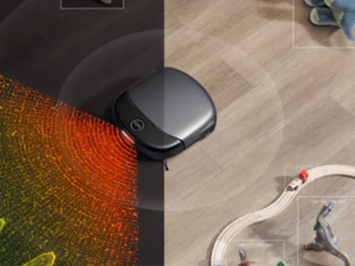Persistent pet urine odors can be a significant challenge for pet owners. When our furry friends have accidents indoors, it can wreak havoc on our floors, resulting in lasting smells that are hard to eliminate. To maintain a clean and fresh living environment, it’s essential to understand how to remove dog urine smell from floor and protect your floors from persistent pet urine odors. This comprehensive guide offers practical tips and solutions for dealing with pet urine on different types of flooring, preventive measures to safeguard your floors, powerful cleaning techniques, and smart maintenance tools to keep your home odor-free. Dive in to discover expert advice that will help you create a more pleasant and hygienic home for both you and your pets.

Understanding the Impact of Pet Urine on Different Flooring Types
Hardwood Floors
Pet urine can be particularly damaging to hardwood floors. The acidity in the urine can seep into the wood, causing discoloration and warping over time. Additionally, if not cleaned promptly, the odors can become deeply embedded, making it challenging to eliminate the smell entirely.
Laminate Flooring
Although laminate floors are more resistant to moisture compared to hardwood, they are not immune to the effects of pet urine. Prolonged exposure can lead to warping and bubbling of the laminate planks. Furthermore, urine can penetrate the seams and underlayment, resulting in persistent odors.
Carpeted Floors
Carpeted floors are perhaps the most susceptible to pet urine damage. Urine can easily soak into the carpet fibers, padding, and even the subfloor, creating a breeding ground for bacteria and mold. This not only leads to foul odors but can also pose health risks to the household members.
Preventive Measures to Protect Your Floors
Immediate Clean-Up
Prompt clean-up of pet urine is crucial to prevent lasting damage and odors. Blot the area with a clean cloth to absorb as much liquid as possible. Avoid rubbing, as it can spread the urine and push it deeper into the flooring. Use a damp cloth with mild soap to wipe the surface, ensuring it’s thoroughly clean.
Use of Protective Barriers
Protective barriers can help safeguard your floors from pet urine. For hardwood and laminate floors, consider using area rugs or mats in areas where your pet frequently urinates. For carpeted floors, use washable, waterproof carpet protectors or pads beneath the carpet to prevent urine from reaching the padding and subfloor.
Training Your Pet
Proper training can significantly reduce accidents and protect your floors. Crate training, regular potty breaks, and positive reinforcement can help teach your pet where it’s appropriate to relieve themselves. Consistency and patience are key to successful training.
Effective Cleaning Solutions for Pet Urine
Enzymatic Cleaners
Enzymatic cleaners are highly effective in breaking down the proteins and bacteria found in pet urine. These cleaners work by using natural enzymes that digest the organic matter, eliminating the odor at the source. Apply the cleaner generously to the affected area, following the manufacturer’s instructions for the best results.
DIY Cleaning Solutions
DIY cleaning solutions can be a budget-friendly option for dealing with pet urine. A simple mixture of white vinegar and water can neutralize odors and disinfect the area. Baking soda is also useful for absorbing odors. Sprinkle it on the damp area, let it sit for a few hours, then vacuum thoroughly.
Commercial Cleaning Products
There are various commercial cleaning products designed specifically for pet urine. These products often combine powerful detergents and odor neutralizers to eliminate the stain and smell effectively. Always choose products that are safe for your specific flooring type and follow the instructions for optimal results.
Smart Tools for Ongoing Floor Maintenance
Using a Robot Vacuum for Daily Cleanup
Daily maintenance is essential to prevent pet hair, dander, and minor messes from contributing to long-term odors. Using a robot vacuum like the eufy Robot Vacuum Omni S1 Pro offers a hands-free solution to keep your floors clean. This advanced vacuum features strong suction power, smart navigation, and the ability to clean multiple surfaces, ensuring your floors remain spotless with minimal effort. Regular use helps reduce the buildup of debris that can harbor odors and bacteria, providing a cleaner living space for you and your pets.

Long-Term Maintenance Strategies
Regular Floor Inspections
Conducting regular floor inspections can help identify potential issues early on. Check for signs of damage, staining, or lingering odors periodically. Early detection allows for prompt action, preventing minor problems from escalating into major repairs.
Refinishing and Sealing
For hardwood floors, refinishing and sealing can provide an added layer of protection against pet urine. Applying a high-quality sealant creates a barrier that prevents liquids from penetrating the wood. Refinishing can also restore the appearance of the flooring, removing any stains or discoloration caused by previous accidents.
Conclusion
Protecting your floors from persistent pet urine odors requires a combination of immediate clean-up, preventive measures, effective cleaning solutions, and smart maintenance tools. By understanding the impact of pet urine on different flooring types and adopting these strategies, you can maintain a clean and fresh home environment. Regular floor inspections and long-term maintenance techniques, such as refinishing and sealing, further enhance the durability and appearance of your floors. With the help of advanced tools like the eufy Robot Vacuum Omni S1 Pro, keeping your floors free of pet hair, dander, and minor messes has never been easier. Implement these expert tips to enjoy a hygienic, odor-free home for both you and your beloved pets.